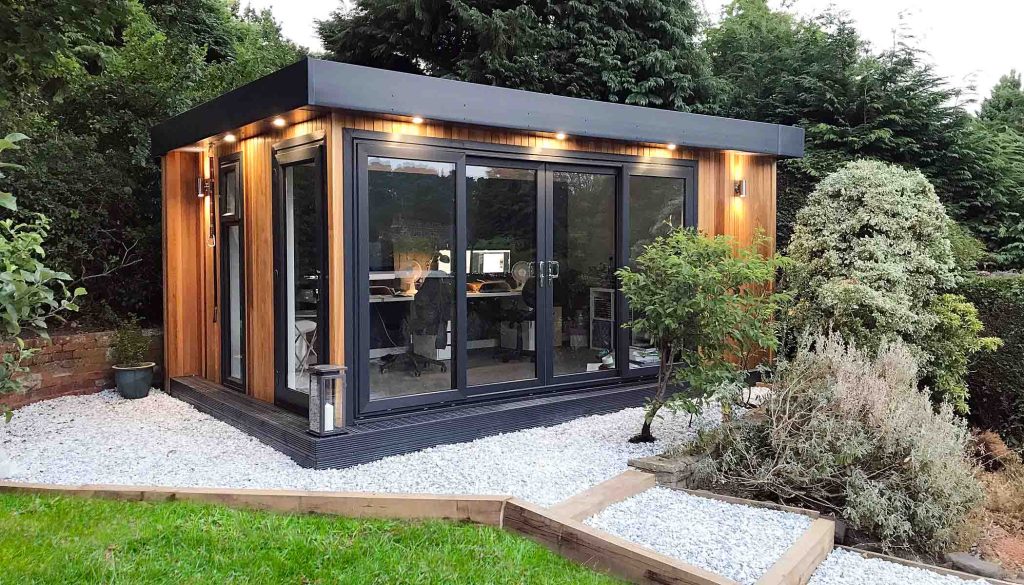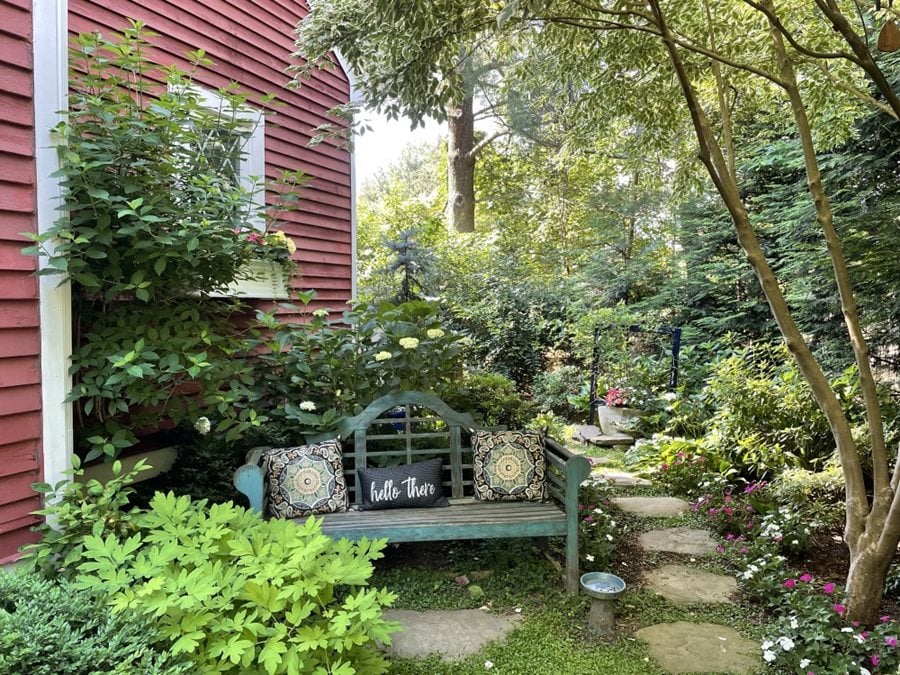Excellent Suggestions On Planning Permission For Garden Sheds
Excellent Suggestions On Planning Permission For Garden Sheds
Blog Article
What Kind Of Planning Permission Do You Require For A Garden Room Etc.?
Highway concerns can influence the need for planning approval when making garden rooms, conservatories or outhouses. Here are the key concerns: Sight and Visibility Lines:
If the new structure blocks the visibility of motorists entering or exiting the property, or impacts sight lines at junctions or bends in the road, then planning permission is required. The planning authority will evaluate whether the building poses danger to road safety.
Closeness to Highway
Typically, structures near the highway like extensions or front gardens that are close to the street require approval for planning. There are specific distance regulations to ensure that the structure doesn't interfere with the operation of the highway.
Access and Egress
Changes to access points, such as creating new roads or modifying existing ones to fit the new structure are likely to require approval from the planning department. This is to ensure that the access and exit points are secure and don't interfere with the flow of traffic.
Parking Arrangement:
If the proposed structure is expected to impact existing parking spaces, or requires additional parking the planning permit is needed. The planning authorities will examine whether the proposed development can provide sufficient parking spaces for the location and if there are no parking issues on the street.
Traffic Generation
Planning permission is needed for any project that is expected to increase traffic levels for example, an office in a garden used by a company with customers who visit. The impact on local traffic levels and road safety will be assessed.
Impact on Pedestrian Access
If the proposed structure is encroaching upon pedestrian walkways or pavements it is necessary to obtain planning permission. The most important thing to consider is to ensure that pedestrian access is not hindered and safe.
Construction Effects on Highways
Planning permission might be required in cases where the effect of construction on roads is substantial, for example temporary obstructions and large vehicular movement. The planning authorities can set the conditions in order to minimise disruptions to roads.
Drainage and Water Runoff:
Another factor to consider is the impact of the project on drainage and runoff water, particularly how it affects highways. Planning permission ensures the new structure will not exacerbate any problems with drainage or flooding that could negatively impact the highway.
Street Furniture and Utilities:
If the proposed building affects street furniture (e.g., lamp posts, signs) or underground utilities (e.g. electrical cables, water pipes), planning permission is needed. The Planning authority will collaborate with relevant agencies to address any issues.
Compliance with Highway Authority Guidelines:
The local highway authority may have guidelines specific to developments close to highways. To ensure road safety the planning permit is needed to make sure the development is in line with these regulations.
Noise and Disturbance From Traffic
If the proposed structure is expected to create the noise or disturb due to traffic (e.g., a garden office that gets visitors or deliveries), planning permission will be required to analyze and mitigate these impacts.
Public Transport Accessibility
Planning permission is required if the proposed development will have an impact on the public transport infrastructure like bus stops and train stations. Planning permission will be required for projects that may impact public transport facilities, such as bus stops or train stations.
In the end, highways concerns are a major element in the planning process for garden rooms, conservatories outhouses, garden offices, or extensions. The need to ensure that the proposed project doesn't negatively impact road safety, traffic flow pedestrian accessibility, as well as the overall infrastructure is vital. Consult the local planning authority and the highway authority at an early stage of the planning process to address these concerns. Read the top glass garden rooms prices for site advice including garden rooms, gym outhouse, gym outhouse, outhouse building, garden rooms brookmans park, out house, out house for garden, outhouse buildings, garden rooms in St Albans, garden room planning permission and more.
In Terms Of Listed Buildings What Kind Of Planning Permission Do You Required To Obtain For Gardens, Rooms And So On?
If you're planning to build conservatories gardens, outhouses, garden rooms or garden offices on the property of a listed property There are particular requirements to be taken into account. These are the most crucial points in regards to planning permission.
In the majority of cases the case, any modification of extension, alteration or construction in the immediate vicinity of a listed building requires both planning and listed building consent. This is because any alteration could have an impact on the nature or significance of a listed structure.
Impact on historical character:
The planning permission is needed to build any extension or new construction that may have an impact on the historic style or appearance of a listed structure or the setting. This includes garden structures and outbuildings.
Design and Materials
The new structure and its materials must respect the historical and architectural significance of the listed building. Planning permission is required if construction and materials aren't traditional.
The building is located in close proximity to the listed building
New structures constructed near heritage assets are examined for their impact on setting and aesthetics. If they don't affect the building’s character, planning permission will need to be obtained.
Size and Scale
The extension, garden room or conservatory should be in harmony and harmonies with the building that is listed. Planning approval and detailed evaluations are more likely for larger structures.
The location within the property:
The position (whether it's in front, behind or on the other side of a listed structure) could affect the need for a permit. Locations that are visible, or which impact the view of the structure need to be evaluated more thoroughly.
Changes in the internal structure:
Even if the new structure is detached, any internal changes (such making new access routes) to the listed property requires listed building consent as well as planning permission.
Conservation Area Overlap
Additional restrictions may apply if a listed building is located in an area designated as a conservation area. It is necessary to obtain permission for planning for compliance with the regulations for both listed structures and conservation areas.
Use of the Building:
Planning permission could be required in relation to what the garden space or outbuilding is going to be used. Planning permission is required for activities that represent a substantial alteration, such as residential accommodation or commercial uses.
Structure:
The building consent listed and planning permission are required for any work that may impact the structural integrity of the building. This is to ensure that both the old and new structures are able to be securely integrated.
Local Authority Guidelines
Local authorities usually provide specific guidelines to listed buildings, which define the kinds of construction and modifications that are permitted. Planning permission is required to ensure that the guidelines are observed.
Professional Assessments
Conservation experts often need to conduct detailed assessments of proposed work on heritage-listed buildings. These assessments help determine if the proposed changes are suitable and also to back the application for planning permission.
It is vital to keep in mind that planning approval or listed building permission will almost always be required for the construction of garden rooms, conservatories and outhouses as well extensions, garden offices or garden offices incorporated into listed structures. Consulting with the local planning authority and heritage professionals early in the planning process is essential to ensure that the building is in compliance with all relevant regulations and to ensure the historical and architectural integrity of the property. Have a look at the best garden electrical installations for site tips including garden rooms brookmans park, garden room heater, garden rooms in St Albans, garden buildings , garden room, conservatories and garden rooms, garden room heater, gym outhouse, ground screws vs concrete base, garden office and more.
What Authorizations Are You Looking For To Build Garden Rooms Or Other Structures In Terms Utilities And Infrastructure When It Is Time To Plan?
Infrastructure and utility considerations may influence the necessity of planning approval prior to the construction of gardens, conservatories, or outhouses. Here are some of the most important aspects to consider: Water Supply and drainage
If the new building needs to be connected to drainage or water supply systems, a planning permit may be needed. Local water authorities might be required to assess any impact on the local water and sewage systems.
Gas and Electricity connections:
A planning permit could be required if the building is being constructed to be connected to gas or electricity. For these connections, it is important to adhere to the construction codes and safety standards.
Utility Easements
Planning permission could be required if the structure is in an area that is designated for infrastructure and utilities. It could be necessary that the utility company in your area approve construction within these areas.
Septic Tanks and Sewage Systems:
If a building is being constructed that requires an septic treatment system or perhaps a smaller tank of septic on the site the planning permission is needed. This system must adhere to rules regarding health and environment.
Drainage and Surface Water Management
A planning permit may be required to tackle runoff from the surface and drainage issues from the construction. It could be required to take measures to prevent erosion, flooding and water pollution.
Access to Utilities for Construction:
Planning permission could be required in the event that temporary utilities are needed (such as water to build). The temporary connection must be in compliance with the standards of safety and environmental protection.
Impact on local infrastructure
The local authority will evaluate whether the infrastructure in place can support the development. This includes roads, utilities as well as public services. Local authorities will assess the infrastructure that is in place and whether it can be used to support the expansion.
Waste Management & Recycling
Permissions for planning may contain requirements regarding waste management and recycling throughout and after construction. Recycling and waste disposal measures must be adequate to reduce environmental impact.
Efficiency in Energy Efficiency:
Installing energy-efficient features and renewable energy systems within a new building (such as heat pumps or solar panels) might require planning permission. It is crucial to be in compliance with the building and environmental standards.
Telecommunications & Internet Connectivity
Planning permission might be required when a building project will require internet or telecommunications. In order to ensure that telecommunications infrastructure is compliant with the requirements and standards it is essential that the infrastructure conforms to these.
Accessible via footpaths and roads
Planning permission could be needed for the construction or modification of access roads or footpaths to the construction of the new structure. Compliance with safety standards and regulations regarding footpath and road construction is essential.
Accessibility to Public Transport
Planning permission might be needed in the event that the proposed structure will have any impact on public transportation (such as stops for buses or stations for trains). Public transport infrastructure must adhere to regulations and standards.
The infrastructure and utilities are important factors that determine the need for planning permission. will be required for conservatories, garden offices outhouses, garden rooms or outhouses. It's essential to consult with the local planning authority early in the planning process to ensure that the building is in compliance with all applicable regulations and requirements. Take a look at the top rated maximum garden room size without planning for site tips including outhouse garden, garden room permitted development, costco garden office, composite garden office, garden rooms, outhouse building, herts garden rooms, costco outbuildings, garden room or extension, garden room or extension and more.